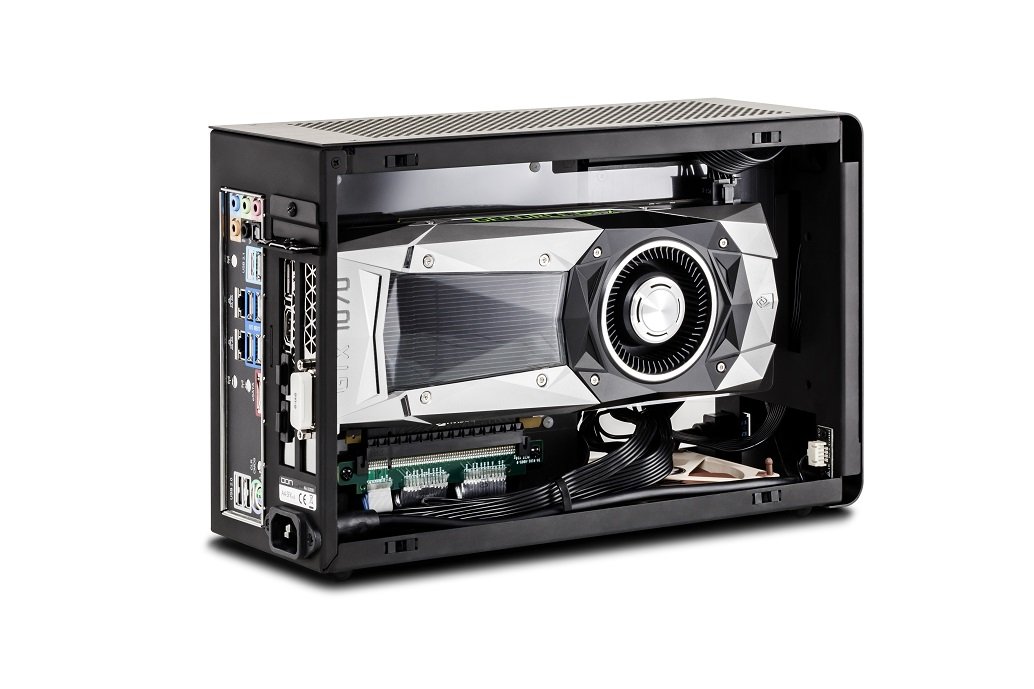It’s been a while since I last built a computer. Years, in point of fact. Laptops plus AWS now have replaced my old uses, and I’ve a great deal less time for gaming. However, my 2013-era server died and took with it my RSS feeds, main web server and SSH bastion. I debated simplifying with Raspberry Pis, but we decided that we’d use the occasion to repurpose my wife’s old compute server and build her a new machine.
Before this, she had used her NUC (i5, 16GB, 1TB M.2 SSD) plus renting time on AWS GPUs as needed. However, recent nVidia license changes have driven spot prices way up, so it starts to make sense to own versus rent.
Needs and wants
- Built for machine learning and data science. Extended time at full load, so server motherboards, ECC memory, high-efficiency power supplies and attention to cooling.
- More memory – SVM in particular. Old box was 16G, so 128GB at least.
- M.2 SSD slot on the motherboard – I can stick the old 1TB SSD in and be up in minutes.
- Fast I/O – SSD, SATA, 10GBit ethernet, PCIe 3.0 x16 slot(s)
- CUDA GPU acceleration and Intel CPU – too many optimized libraries to bother trying AMD.
- Minimal power consumption at idle
- Small physical size
- As quiet as possible – SSDs, etc.
What we chose and why
- SuperMicro X10SDV-6C+-TLN4F motherboard. 6 cores/12 threads, MiniITX form factor, 35W thermal design power, up to 128GB of memory in 4 channels /RDIMMS. This is the last-gen Xeon D-1521, but the lower power and smaller size are compelling. $726 shipped.
- Dan A4/SFX case, based on a recommend from Jeff Atwood. Super clever use of space and quite attractive. $260 shipped.
- SilverStone Technology SST-NJ450-SXL power supply. 450W, but so efficient that no fans or vents are needed! $190 shipped.
- nVidia RTX 2080Ti ‘graphics card.’ A beast with over 4,500 cores, plus another thousand-odd stream/vector/special purpose chips, 11GB of memory, and a whopping 250W power target. No ‘buy’ link, because my brother used his employee quota for me! (They don’t get a discount, just the ability to buy at list price. That’s actually helpful, as bitcoin and derivatives have driven up prices over list.)
- 64GB of memory, registered ECC DDR4, in two 32GB sticks, $610 shipped. Leaves two open slots to max it out at 128, and we get 2 of the 4 memory channels to use.
Pros and Cons
So we’ll have card and CPU cooler noise, we’ll see. I don’t have the ability to do 10Gbit networking yet, though I can probably trunk a couple at 1Gbit for the heck of it. I will need to try some games just to enjoy having the state of the art, though I’m bracing myself for driver torment on Linux. Here’s hoping!
Discussion
These are all high grade choices, you can spend a lot less for a similar machine if you don’t mind space, power and noise. The 2080 is overkill, a 1060 would have sufficed but the employee plan only had limited card selection. After a few years at it (she’s got master rank on Kaggle), we were sure enough of her uses to buy the high-end GPU. Similar with cores (6) and memory (start with 64) – that’ll do well for her current contests and workloads; there are a lot of Supermicro boards from 2 to 24 cores, so you can flex there depending on need and budget. A desktop gamer system would probably have worked too, but I now get to try management consoles and the like plus I expect better reliability from this. I’ll post updates, of course.
This is the case – cute, eh?



2 replies on “2018 machine learning home build”
Excellent….now you have me wanting to upgrade and dump my HUGH eATX board. Great components.
LikeLike
Thanks! Took most of last weekend to research it so I wanted to share.
LikeLike